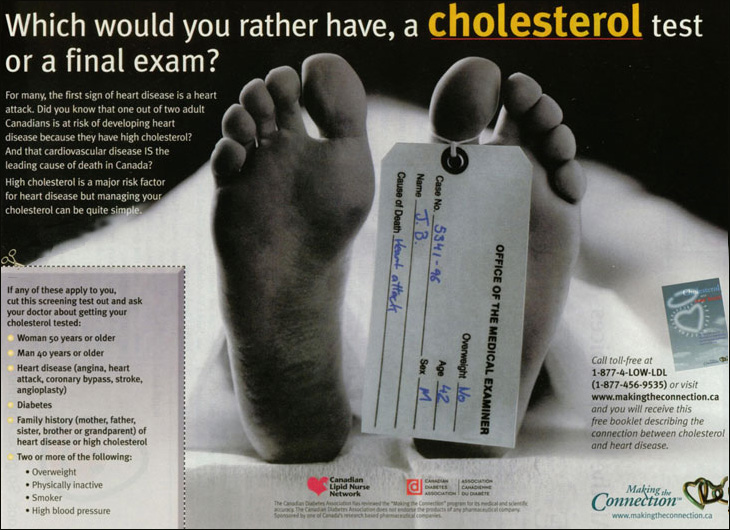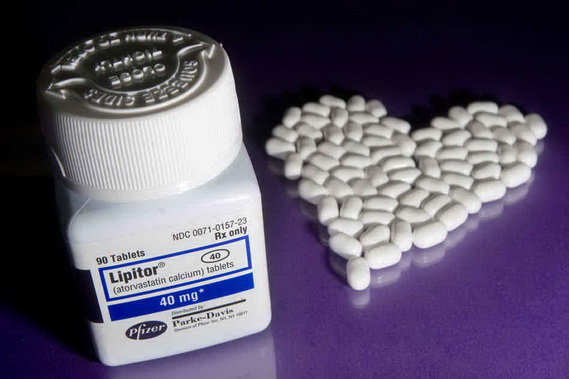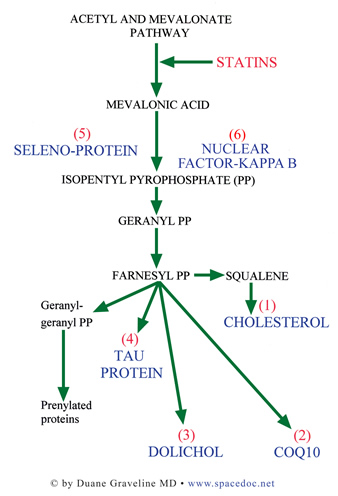PLEASE NOTE: This in-depth piece on the causes of heart disease doesn’t rely on the ABC’s Catalyst program, but on long established evidence that has been swamped by decades of cholesterol-causes-heart-disease propaganda. Even the link between saturated fats and heart disease is now being questioned by scientists running new studies an re-examining old ones. More HERE and HERE.
We’ve also published an update on new guidelines released in the USA that have effectively doubled statin drug prescriptions, while telling doctors to stop targeting cholesterol and LDL.
ABC’s Catalyst shows real Ticker
If you love wine, you’ll most likely love good food as well. Since most good food is rich, do you worry about its effect on your health? All that saturated fat in beef cheeks, the duck fat in the confits, and those triple cream soft cheeses you love?
Pour yourself a glass of wine and put some of your favourite cheese on a plate, then sit back and read the skinny on the fat story. ABC’s catalyst ran a story about cholesterol last year – THE HEART OF THE MATTER – that the didn’t surprise some of us one bit. If you missed the Catalyst report, that’s too bad because the ABC gave into pressure from the establishment and pulled the programs off iView.
The salient points were these:
- There’s little scientific evidence to support the claim that cholesterol causes heart disease
- There little scientific evidence to support the claim that saturated fats cause heart disease
- Arteries do not clog up through deposits of cholesterol or fat, but through inflammation in artery walls
- There’s a growing mountain of evidence that excess sugar in our diets causes heart disease (and diabetes and more)
This news is many years old, but that hasn’t stopped doctors and health authorities from ignoring the clear evidence that their prescribing habits and dietary advice have been major contributors to the steady increase in heart disease, diabetes and obesity in western countries. Once something gets stuck in medical minds, it seems that it takes forever to prize loose – for decades the medical profession denied copious evidence that the ERT and HRT drugs it pushed on women were cancer promoters.
The French Paradox
Doctors who promoted diets low in carbohydrates way back in the seventies – the Atkins diet is an example – were virtually persecuted by the medical system. Then in 1991, 60 Minutes in the US ran a story on The French Paradox which showed that the French lived longer lives than Americans and had half the rate of heart disease – 143 vs. 315 cases per 100,000 middle-aged men. As we can see from the map below, France, Spain and Italy have the lowest rates of heart disease in Europe, yet they all enjoy rich foods high in dietary fat. (The deeper the green, the lower the rate of heart disease).
Source: European Hert Journal 2008, No 29
The paradox was that the French ate a high-fat diet, smoked more and exercised less than Americans. Around the same time, the Lyon Diet Heart Study put one group of people with heart problems on the low-fat American Heart Association diet, and another on a Mediterranean diet. After only 3 years, the ethics and safety committee stopped the study because the Mediterranean diet group had a 70% lower risk of death compared to the group on the low-fat AHA diet.
What is eye-opening here is that the cholesterol levels in the Mediterranean diet group never moved, yet the heart attacks and deaths plummeted. The other astonishing outcome was that the medical establishment completely ignored these data and continued to promote its low fat diet and its very ordinary heart drugs.
More Saturated Fat = Longer Life
The French also live 2.5 years longer than Americans on average, which is interesting. Another paradox is that the longest living people in France are those in the Perigord, people who enjoy rich foods that are very high in saturated fats, such as geese and ducks, foie gras, pork sausage, cassoulet and cheese. As if to add insult to injury, they use goose and duck fat for cooking.
When confronted with these facts, medical scientists came up with ever more tortuous explanations for the French paradox, ranging from the antioxidants in red wine to the cholesterol-lowering properties of walnuts. All we can say is: if the cholesterol-lowering properties of walnuts were really that potent, the pharmas would’ve busted a gut to isolate the active ingredient and to turn it into a blockbuster drug. Here’s the American way of promoting drugs:
It’s not well known that the long-running Framingham Heart study in the US doesn’t support the cholesterol causes hearty disease theory. Dr. William Castelli, a former director of the study, put it this way: ‘In Framingham, Mass., the more saturated fat one ate, the more cholesterol one ate, the more calories one ate, the lower the person’s serum cholesterol … We found that the people who ate the most cholesterol, ate the most saturated fat, ate the most calories, weighed the least and were the most physically active.’
One problem is that doctors and health experts never go back to the source of the current theories, even when they dissolve under their very eyes. Had they looked at the research that started all this – the Prudent Diet promoted by Ancel Keys and the US government – they would’ve found that Keys simply ignored those countries that didn’t support his pre-fabricated theory.
It’s no surprise that rates of obesity and diabetes follow similar patterns to the French Paradox: the French have one third the obesity rate of the USA, for example. In a thirty-year study published in The Lancet , the United States saw fasting glucose levels rise over twice the rate of Western Europe. The US topped the charts, while France sat at the bottom alongside Austria and the Netherlands.
Yet diabetics in the US and in Australia are advised to eat low-fat, high carbohydrate diets. If you’re a type II diabetic or are in danger of becoming one, a high fat, low carbohydrate diet is your best option . It’s elementary, dear Watson: our bodies convert carbs to sugar.
So why are we told the opposite?
We’ve been subjected to years of brainwashing by doctors, dieticians and health authorities, with messages that fat makes us fat, that saturated fat is a killer, and that cholesterol clogs up our arteries. This is has been a gold mine for drug companies and the medical system, and they’ve followed the model that has proved so effective over the decades:
- You establish a vital factor for a disease, and tell people to have it measured often
- Push people to take drugs as soon as they exceed the arbitrary threshold
- Once you have the health authorities on board, get them to lower the arbitrary threshold
- Push more people to take the drugs for longer (forever is best, obviously)
- Give people bad advice on other options (promote a diet that reduces insulin resistance and promotes weight gain, and don’t mention exercise
- Get patients on more drugs and more tests to manage the side effects of the original drugs and the poor diet.
They’ll never get off that treadmill. Don’t blame me for being cynical – read the next section – and remember the simple advice from sane quarters: eat real food and get off your butt often.
Killing us softly
It turns out that low-fat diets of the kind we’ve been told to adopt do enormous damage to our health in multiple ways. Here are some examples:
- To produce low-fat dairy, fat is replaced by sugar. Yes, low fat milk, cheese and yoghurt have lactose added after the fat is reduced to add some body back and make them palatable. Lactose is a form of sugar.
- The margarine we were urged to replace butter with is a highly manipulated product rich in transfats that are toxic and don’t exist in nature.
- The polyunsaturated fats we were told to use for cooking for decades are chemically unstable and oxidise rapidly (turn rancid) when used for cooking.
- The canola oil that was promoted as a good oil has been subjected to pressing at high-temperatures, solvents, bleaching, degumming, deodorizing, and caustic refining. Transfat levels as high as 40% in the finished product, and most canola oil has been genetically modified.
It’s like a conspiracy, isn’t it? Health authorities have pushed us away from natural foods that are good for us – butter and eggs, for example – to highly manufactured and artificial foods that are dangerous to our health.
Killing us any way they choose
There are healthy civilisations that live on high carbohydrate diets, in Africa for example. They tend to be very active, however, and burn up most of the energy. In our sedentary western world, too many carbs raise sugar levels unless you eat real food and get plenty of exercise. All the packaged stuff, from cereals to yoghurt to commercial breads, is loaded with sugar and salt.
Excess sugar is turning out to be the silent killer of our age. Too much salt is nearly as bad, so the packaged food makers are loading their rancid wares with both to make sure they’re getting us coming and going. And they start with our kids to get them hooked at an early age, and all our physicians and politicians are prepared to do is talk.
Will the real killer please stand up?
On Monday evening, the ABC radio’s PM program reported that Professor Emily Banks – Chair of the Advisory Committee on the Safety of Medicines – had urged the ABC not to screen the second part of the Catalyst program that is due to go to air on October 31, with warnings that some people might stop taking their drugs and die of heart attacks. In some circles, this is called SOB – Standard Operational Bullshit.
Just to put Professor Banks’ claim in perspective, iatrogenic disease (harm done to patients by the medical system) is the third highest cause of death in the USA, where some 225,000 people die every year as a result of unnecessary surgery, hospital errors, infections contracted in hospitals and the deadly side effects of drugs. Drug side effects claim the lives of 106,000 Americans a year, about 3 times the number that die of gunshots or in car accidents.
If you think Australia’s health care is better, the last study run here put the number of victims at 15,000 a year (about the same rate proportionally). We don’t know how many people doctors and dieticians have killed or turned into obese diabetics by giving them the wrong dietary advice.
So please, spare us the ridiculous claims that people will die if they’re given the facts.
The Cholesterol Myth – Part 2
The second part of the Catalyst documentary examined statin drugs. Experts have called statins today’s penicillin or aspirin – magic bullets in anyone’s language. Again, the news on how statins acquired this reputation is not fresh but is not well-publicised for reasons that will become obvious. This drug class has been the biggest money spinner for the pharmas ever, and the market is worth over $20 billion a year.
By the early nineties, the drug side of cardiology had sunk into a deep depression when studies revealed that the oldest and crudest of heart drugs – diuretics that the patents had long run out on – were just as effective as beta-blockers, calcium blockers and ACE-inhibitors. Statins were the only new drug class on the horizon, but early results were far from convincing.
The pharmas persevered and tweaked their trials until the results improved. There’s a well-known saying in the trials industry: tell me the outcome you want, and we’ll design you a trial that delivers them. That’s exactly what happened with statin drugs:
- The only group that showed significant benefit were white, middle-aged men
- Most of the trials have been run on white, middle-age men (surprise, surprise)
- The most consistent outcome was lowered cholesterol levels, so if the cholesterol/ heart disease connection is a myth, the whole thing comes down like a house of cards.
The impact of statins on mortality is much more of a mixed bag. For example, Harvard Medical School found no evidence that statins worked as primary prevention for women after they re-analysed 8 major statin studies in 2007.
Others question the prescription of statins for primary prevention (no known heart problems) for men or women unless they’re at high risk of cardiovascular problems. The respected Cochrane Institute was among them but their most recent meta analysis concluded: ‘Of 1000 people treated with statins for 5 years, 18 would avoid a major CVD event.’
In other words, 1000 people had to take drugs with serious side effects for 5 years for 1.8% to see a benefit. Yet doctors push statins on people the same way they did the daily aspirin until its blood-thinning properties were found to be offset by its tendency to form stomach ulcers that burst.
The best drug your doctor won’t tell you about
When you look at the outcomes of statin studies in detail, it’s clear that the benefits of the drugs even in secondary prevention are exaggerated while the side effects of statin drugs are downplayed. They range from memory loss and liver or kidney damage to raised blood sugar levels, muscle damage and fatigue, and they’re not trivial – 10% of trial subjects tend to suffer muscle damage.
The huge Women’s Health Initiative study in the USA showed a 48% increase in risk of diabetes, but the promoters of statins don’t want to talk about that. In a 2010 meta-analysis of statin studies for secondary prevention, 96% of subjects saw no benefit at all (98% in primary prevention studies). In other words, the risks are high while the returns are pitiful (see footnote for more details).
So when the results of a new study of 420 subjects in several countries show that a new compound decreases all cause mortality by half, you’d think cardiologists would be dancing in the streets and billboards would be flashing the great news in every city across the world. OK, the numbers aren’t huge but the numbers are decisive:
29 (14%) of patients in the CoQ10 group (of 210) reached the primary endpoint – a Major Adverse Cardiovascular Event (MACE) – compared to 55 (25%) patients in the placebo group (of 210). If we take the delta of 26 and divide that into 210, we find that CoQ10 made a vital difference to over 12% of the people who took it. That’s 3 times more than the 4% who saw any benefit in the statin trials.
CoQ10 also halved the risk of dying from all causes – 18 (9%) patients died in the CoQ10 group compared to 36 (17%) in the placebo group. The CoQ10 group even had fewer adverse events than the placebo group. Study leader Professor Mortensen said: ‘Other heart failure medications block rather than enhance cellular processes and may have side effects. Supplementation with CoQ10 … corrects a deficiency in the body and blocks the vicious metabolic cycle in chronic heart failure called the energy starved heart.’
Statins work by inhibiting the enzyme HMG-CoA reductase, which plays a central role in the liver’s synthesis of cholesterol. It follows that all metabolic functions further down the pathway are affected. Source: Statins – The Basics, Raw Horizons
Statin drugs inhibit Co-enzyme Q10 production. CoQ10 is an essential nutrient, not a drug. Its heart benefits were established decades ago but no major trials were funded since drug companies have no interest in nutrients (and governments don’t like upsetting drug companies by funding studies on nutrients). And here’s where we join the dots: Co-Q10 is essential for the heart muscle to function, and researchers aware of this have warned for years that statins reduced Co-Q10 levels in heart muscles.
That’s why muscle damage and fatigue are common side effects of statins. In a recent study, researchers found that statins were associated with both decreased energy levels and fatigue with exertion. They stressed that ‘women seemed to be disproportionately affected.’ Muscle damage and fatigue come as no surprise since coenzyme Q10 is an important factor in mitochondrial respiration. ‘Primary and secondary deficiencies of coenzyme Q10,’ say the textbooks, ‘result in a number of neurologic and myopathic problems.’
We repeat our simple but sane advice: eat real food, drink good wine and get off your butt often. And, if you’re worried about your ticker, get some C0Q10.
‘We are observing the revealing of the utmost medical tragedy of all times.’
I applaud the guys at Catalyst for their fearless reporting, most of all on how the benefits of statin drugs are hyped beyond belief and the side effects brushed aside. The point made by the authors of the research paper below is that ‘there has been active discouragement to publish any negative studies on statins.’
As I said above, statins were the last great hope for cardiology. They simply had to be the answer. By the turn of the millenium, they had become magic bullets. The hype was such that governments talked about adding them to the drinking water like fluoride, and to hamburgers. The way the drug lords have rigged the system is another story, as is their undue influence on doctors and health authorities. Good on Catalyst for bringing this out too.
To balance things up a bit, I’ve extracted a few points from a paper titled The Ugly Side of Statins. Systemic Appraisal of the Contemporary Un-Known Unknowns*
‘It is beginning to dawn on some clinicians that contemporary treatments are not only failing to impact on our most prevalent diseases, but they may be causing more damage than good. A perfect example of such an issue is the statin saga. The statin industry, with all of its spin-off, is a 20-billion-a-year industry.
‘We are observing the revealing of the utmost medical tragedy of all times. It is unprecedented that the healthcare industry has inadvertently induced life-threatening nutrient deficiency in millions of otherwise healthy people. What is even more disparaging is that not only has there been a failure to report on these negative side-effects of statins, there has actually been active discouragement to publish any negative studies on statins.
‘For every 10,000 people taking a statin, there were 307 extra patients with cataracts, 23 additional patients with acute kidney failure and 74 extra patients with liver dysfunction. Furthermore, statin therapy increased muscle fatigabilty by 30%, with 11.3% incidence of rhabdomyolysis at high doses. What’s more, it induces inflammatory myopathy, including necrotizing autoimmune myopathy with immunosuppression and the statin-related myopathy can last for 12 months.
In sum, ‘there is increased risk of Diabetes Mellitus, Cataract formation, and Erectile Dysfunction in young statin users, all of which are Alarming. Furthermore there is a significant increase in the risk of cancer and neurodegenerative disorders in the elderly plus an enhanced risk of a myriad of infectious diseases.’
The Bottom Line
It’s good to know that there are scientists left out there whose moral compasses have not been compromised by the drug companies. And physicians like Duane Graveline, a former USAF Flight Surgeon and NASA Astronaut who wrote a short piece about The Netherlands Radar Television show raising the statin drugs side effects issue. She said the show ‘triggered an intensely negative reaction from Pfizer Netherlands and the medical community, and an intensely positive reaction from their thousands of viewers who appeared to know far more than their doctors about statin side effects.’
Radar Television invited 50,000 viewers to participate in an online survey. 27,692 replied. Of these, 4738 (17.1%) were on Statins. Of the 4738, 27.1% reported side effects as follows:
748 (39.8%) reported muscle pain
592 (31.5%) reported joint pain
301 (16.0%) reported digestion problems
239 (12.7%) reported loss of memory
420 reported other effects.
In contrast to the SOB we get from the medical system, the man from Harvard on the Catalyst program made one simple point: a moderate amount of regular exercise will add 2 years to your life; there’s no proof that taking statins for the rest of your life will do that. As we said: the sane advice has always been: eat real food and get off your butt often. 🙂
Kim






